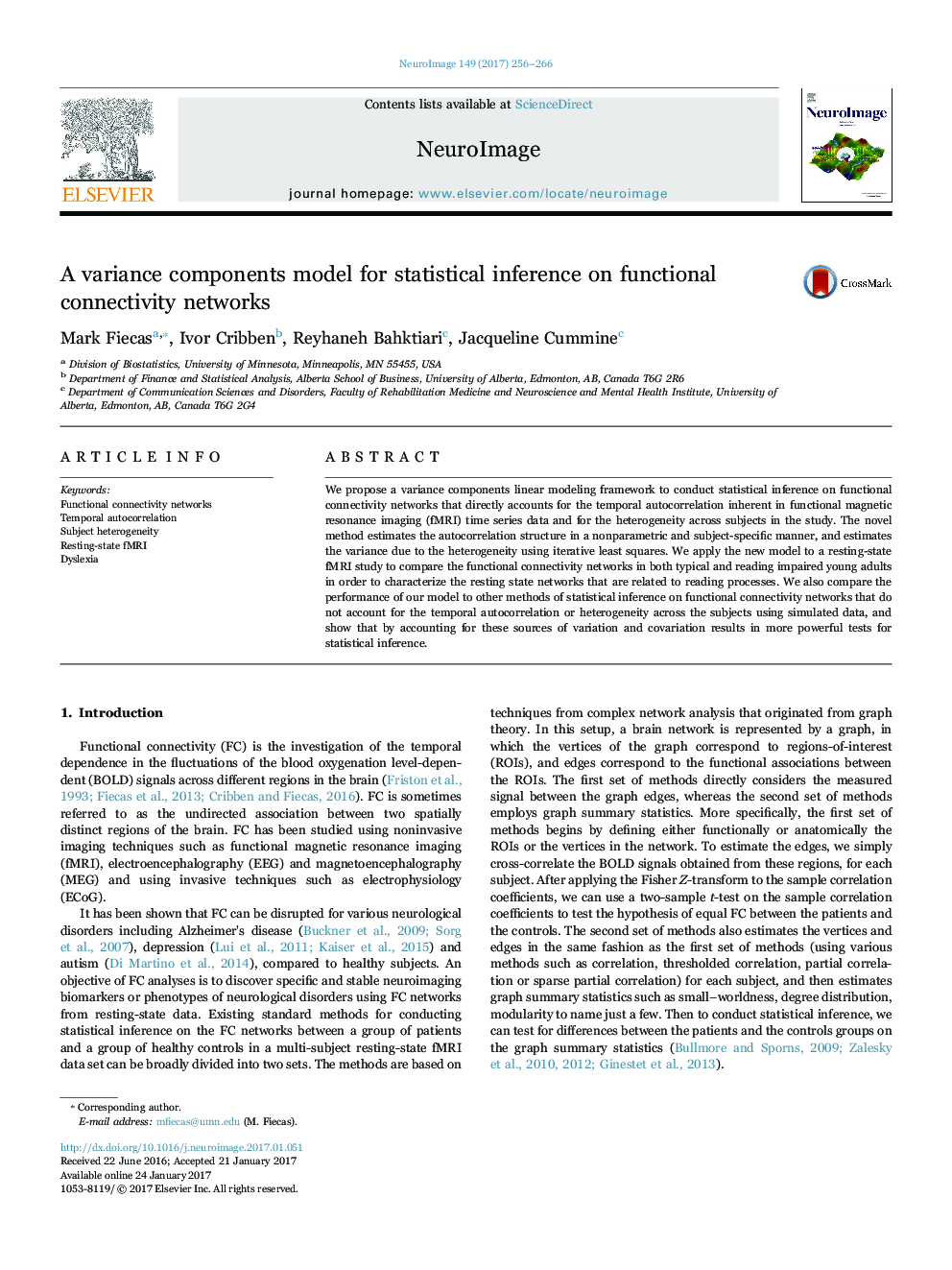| Article ID | Journal | Published Year | Pages | File Type |
|---|---|---|---|---|
| 5631250 | NeuroImage | 2017 | 11 Pages |
â¢A new linear model for testing entire functional connectivity networks.â¢The model accounts for autocorrelation and for variability both within and between subjects.â¢The test controls for false positives while maintaining high power.
We propose a variance components linear modeling framework to conduct statistical inference on functional connectivity networks that directly accounts for the temporal autocorrelation inherent in functional magnetic resonance imaging (fMRI) time series data and for the heterogeneity across subjects in the study. The novel method estimates the autocorrelation structure in a nonparametric and subject-specific manner, and estimates the variance due to the heterogeneity using iterative least squares. We apply the new model to a resting-state fMRI study to compare the functional connectivity networks in both typical and reading impaired young adults in order to characterize the resting state networks that are related to reading processes. We also compare the performance of our model to other methods of statistical inference on functional connectivity networks that do not account for the temporal autocorrelation or heterogeneity across the subjects using simulated data, and show that by accounting for these sources of variation and covariation results in more powerful tests for statistical inference.
